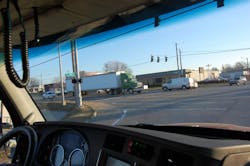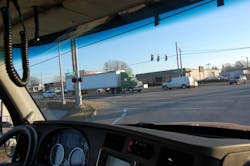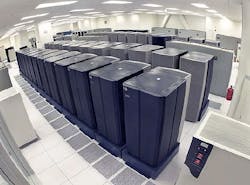The information technology (IT) professionals and business executives rarely see eye-to-eye where computers and other digital systems are concerned should come as no surprise to anyone in trucking.
Indeed, I talked about a similar disconnect between younger workers and the business suite in this space last year and though that focused more broadly on “innovation” strategies, where trucking is concerned, IT is going to be the “innovative” key to unlocking more profit down the road. (You can read more about that particular angle by clicking here.)Yet the challenge for motor carriers on the IT front remains if not simple at least straightforward: more and more of the administrative and regulatory requirements governing the industry are going digital. Thus IT will be a critical component to moving freight now and in the future, regardless of whether that development is welcomed or not.
That’s why the findings from Canon U.S.A.’s inaugural Workflow Optimization Study are a little worrisome, because this survey indicates that there seems to be a growing disconnect revolving around IT strategy within the broader U.S. business community.
The results from Cannon’s online survey – conducted by Harris Poll last May and involving 211 business professionals – highlighted what the company called “significant diverging opinions” between IT decision-makers and non-IT executives regarding the importance of integrating cloud, mobile and digital workflow strategies.
For example, an overwhelming majority of IT decision-makers strongly believe that such above-mentioned tools are very or extremely important investments for running businesses more effectively, while non-IT executives are less likely to view their operational importance this strongly.
Further, while 82% of IT decision-makers surveyed are very or extremely confident their organizations’ ability to integrate paper and digital document workflows, while just 56% of non-IT executives said the same.
Here are a few more tidbits highlighting the divergent views between these two groups, in terms of the importance attached to specific IT functions:
- Cloud-based document technology: 79% of IT decision-makers believe it’s important vs. 47% of non-IT executives
- Integrating paper-based and digital information into company databases: 77% of IT decision-makers vs. 55% of non-IT executives
- Printing information from the cloud: 75% of IT decision-makers vs. 45% of non-IT executives
- Managed print services: 71% of IT decision-makers vs. 46% of non-IT executives
- Bring Your Own Device (BYOD) and mobile printing programs: 57% of IT-decision makers but just 23% of non-IT executives said their companies provide support for all devices and platforms
“This nationwide study found that IT decision-makers and other executives do not always see eye-to-eye on the importance of investing in cloud, document workflow and mobile technologies,” he stressed. “In many cases, the survey results indicated a ‘knowledge gap’ between IT and non-IT professionals’ awareness of which technologies their companies are deploying, and how they’re being used.”
Here, though, are a couple of interesting points of agreement between these two camps, which I htink are important where trucking is concerned:
- A total of 82% of all professionals – IT and non-IT alike – strongly or somewhat agree that they anticipate there will still be a need for paper-based workflows in their organization for at least a decade.
- When asked about the issues related to their current document workflows that they are very or extremely concerned about, nearly two-thirds (65%) of both groups cited security breaches, making it the top concern.
David Johnson, principal analyst with IT consulting firm Forrester Research, added some commentary to Canon’s study – noting in particular that where workforce computing trends are concerned, maintaining a “one-size-fits-all” approach is getting harder to achieve.
“The corporate personal computing environment is now a mix of legacy Windows, client/server, cloud-hosted and native apps, with a wide array of devices and operating systems, some of which are not well suited to an evolving, mobile workforce,” he added.
“IT leaders have the opportunity to offload costs and responsibility while increasing productivity by launching formal BYOD programs that meet employees’ increasing demands to use the technology of their choice,” Johnson stressed. “Executives must develop a framework to continuously improve and evolve their BYOD programs by examining six factors, including: employee profiles, device diversity, mobile application requirements, and self-service initiatives.”
Factors trucking will have to keep in mind as IT needs will only continue to grow where shipping freight is concerned.



